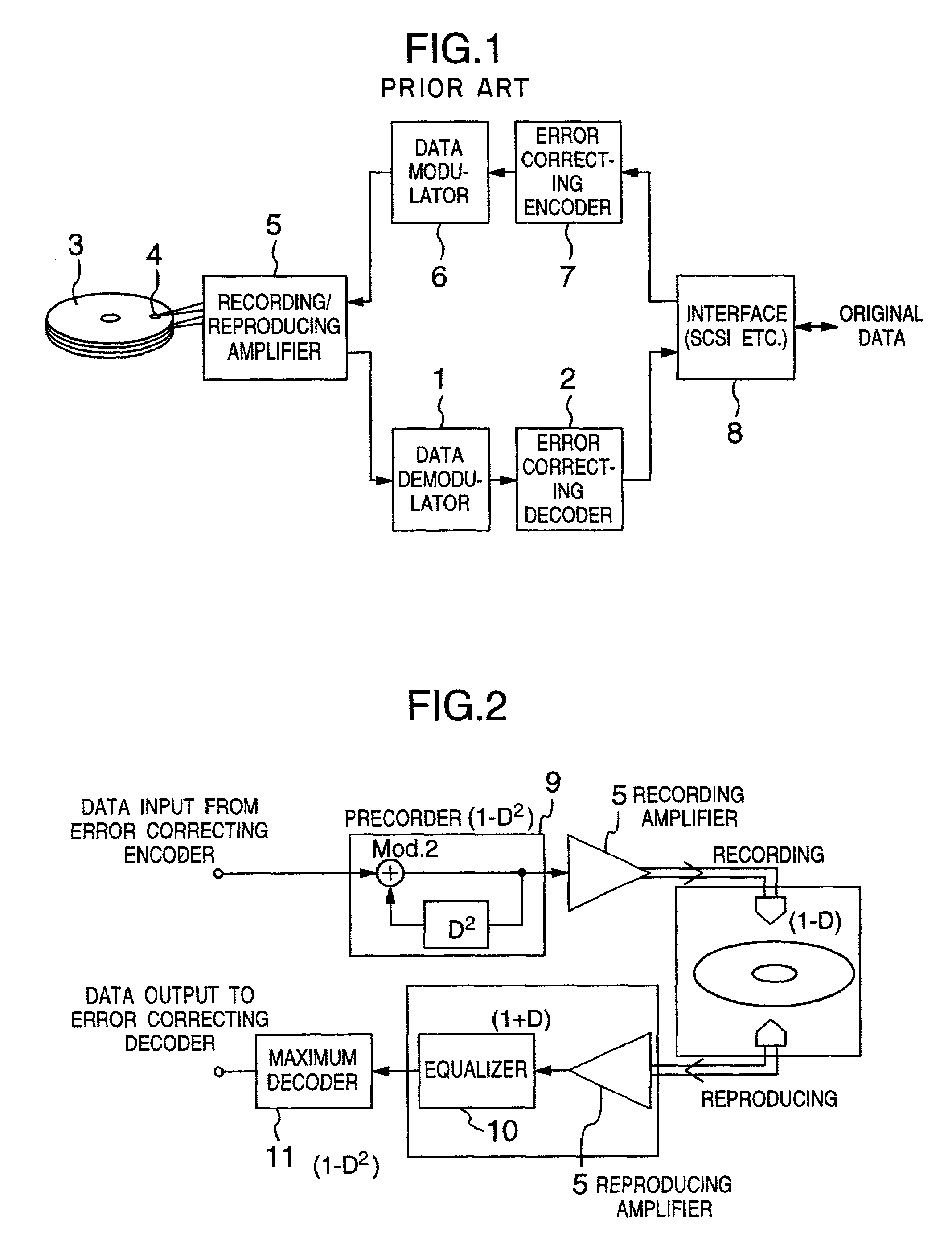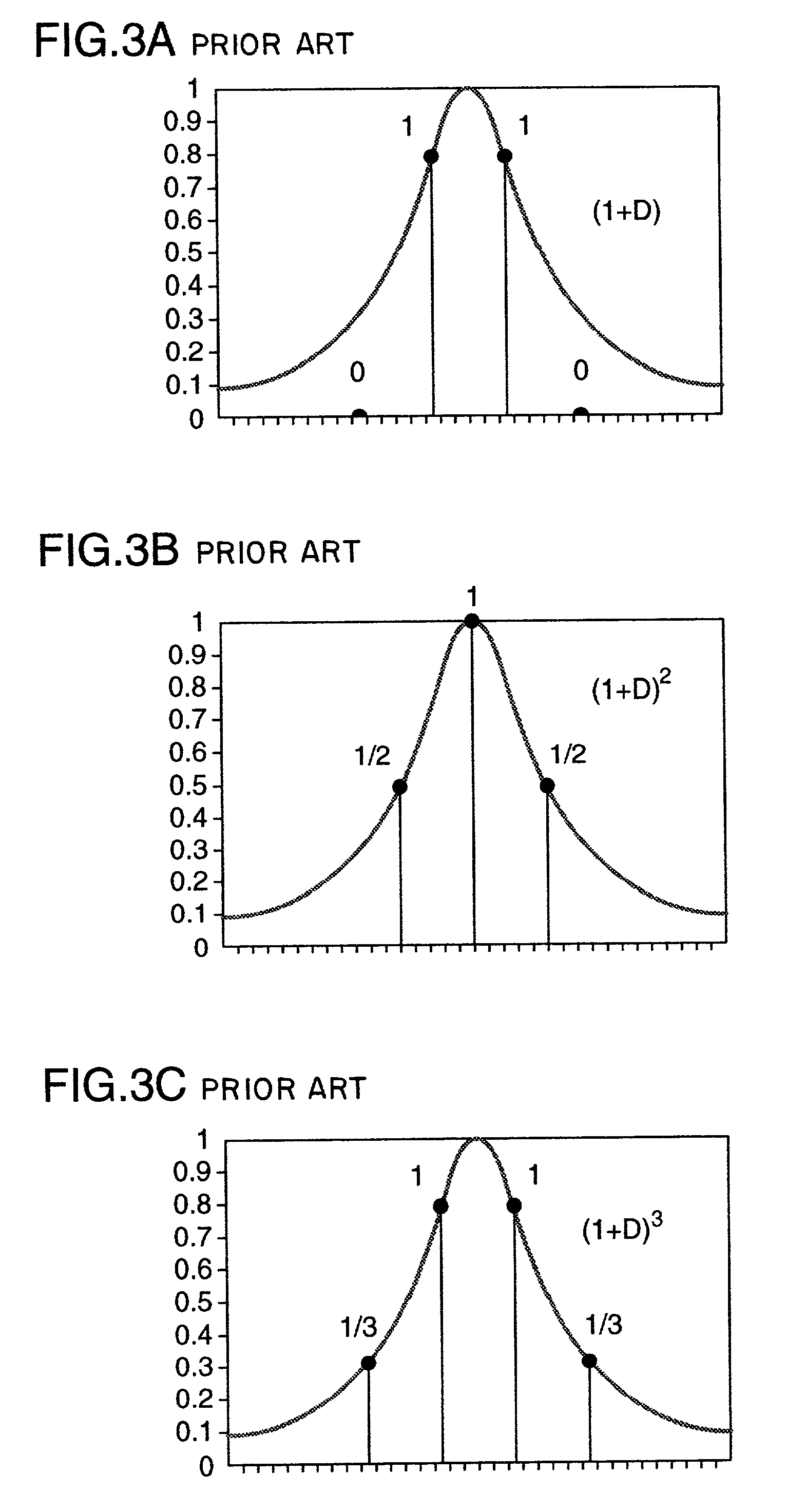Signal processing circuit
a signal processing circuit and signal processing technology, applied in the direction of amplitude demodulation, digital signal error detection/correction, line-faulst/interference reduction, etc., can solve the problem of deteriorating performance of the maximum likelihood decoder
- Summary
- Abstract
- Description
- Claims
- Application Information
AI Technical Summary
Benefits of technology
Problems solved by technology
Method used
Image
Examples
Embodiment Construction
[0049]In FIG. 12, there is shown a structural example of an actual circuit arrangement according to the present invention. First, an output of a magnetic head is supplied via a preamplifier to an AGC (automatic gain control circuit) and LPF (low-pass filter) 15. After this magnetic head output is controlled by the AGC / LPF 15 in such a manner that an amplitude of a signal becomes a constant, noise components other than a desirable frequency range are removed by this AGC / LPF 15. This LPF output signal is discrete-quantized by an ADC 16, and then the discrete-quantized signal is inputted into an equalizer 10. As previously explained, in the equalizer 10, the reproduction signal derived from the magnetic head is equalized in such a manner that this reproduction signal has a partial response characteristic of (1−D2). A clock signal required to operate the ADC 16 is produced from the output signal of this equalizer 10 by a PLL circuit 20. At the same time, a control signal of the AGC / LPF ...
PUM
 Login to View More
Login to View More Abstract
Description
Claims
Application Information
 Login to View More
Login to View More - R&D
- Intellectual Property
- Life Sciences
- Materials
- Tech Scout
- Unparalleled Data Quality
- Higher Quality Content
- 60% Fewer Hallucinations
Browse by: Latest US Patents, China's latest patents, Technical Efficacy Thesaurus, Application Domain, Technology Topic, Popular Technical Reports.
© 2025 PatSnap. All rights reserved.Legal|Privacy policy|Modern Slavery Act Transparency Statement|Sitemap|About US| Contact US: help@patsnap.com



